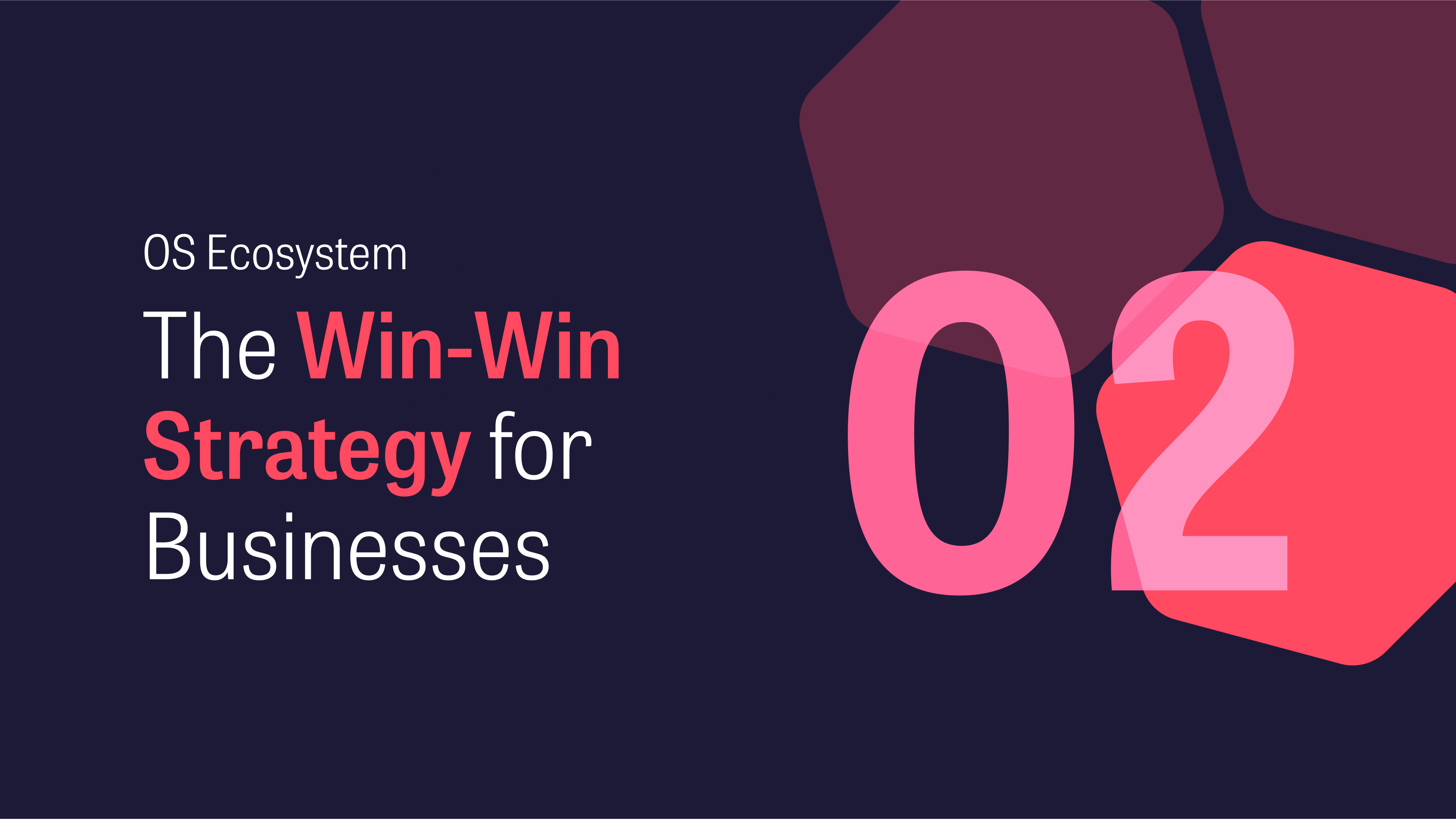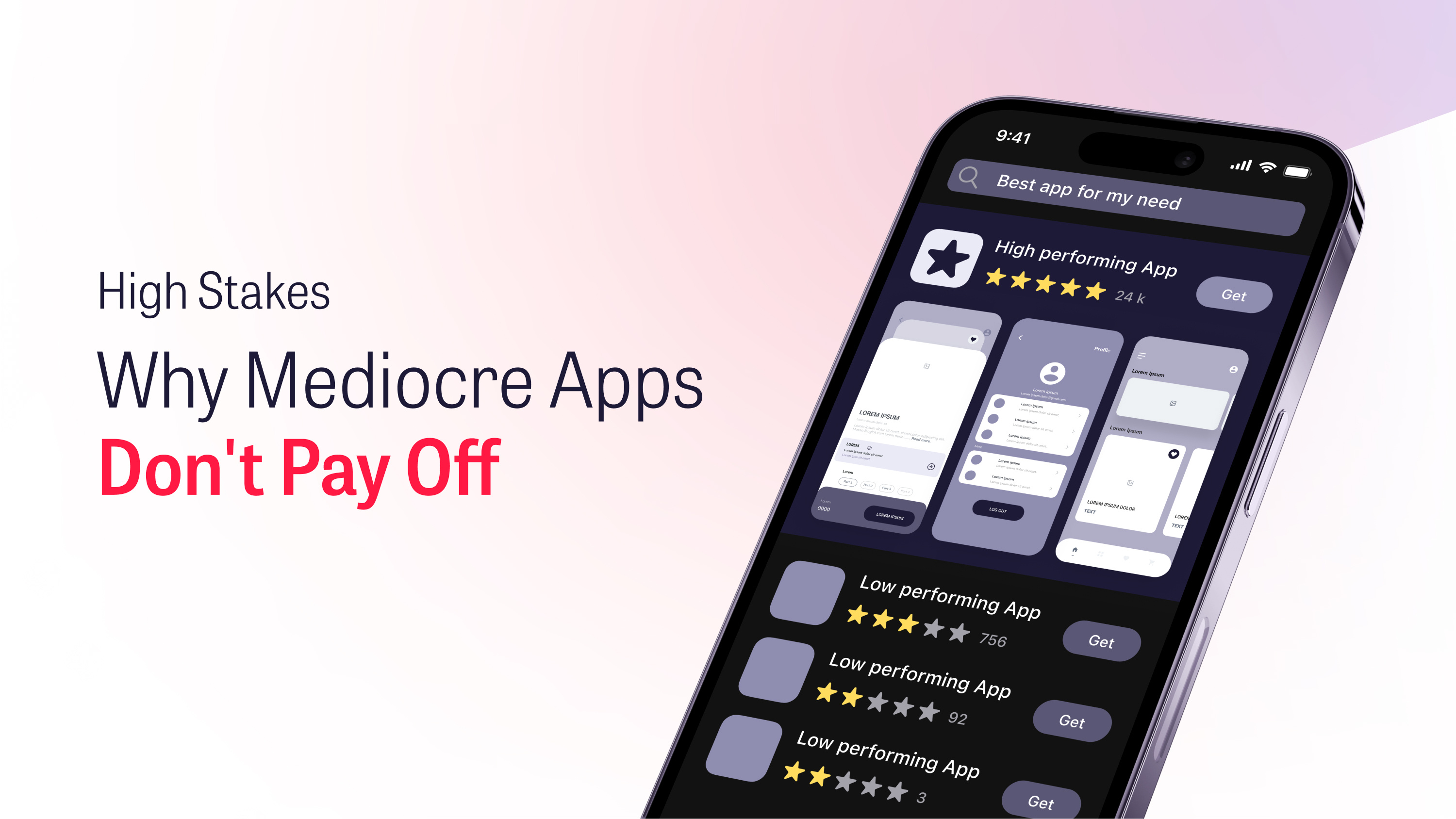
To excel in today’s app market, businesses must expand beyond in-app experiences, and leveraging the operating system (OS) ecosystem is the key to succeed in engaging users effectively. Harnessing its capabilities can create many touchpoints that result in a win-win situation for both businesses and users.
In 2023, we conducted a survey with over 3000 Danish people between 18 and 70 years of age about their app preferences. It’s one of the largest studies on app usage conducted in Denmark. Five major themes were identified, which have been turned into the Mobile App Trends 2024 report. Get access to the full report below 👇
Why should business owners care about the OS ecosystem?
Moving closer to users through accessibility by utilising the OS ecosystem allows a business to apply unique features that better suit the value proposition, while creating less friction and more touchpoints for the users which in turn results in:
🙆 A Great User Experience (UX)
A smooth and frictionless mobile app experience enhances user satisfaction. Happy customers are more likely to remain loyal and engage with the app, leading to higher retention rates and potentially increased revenue.
🤝 Better Conversion Rates
Every step a user has to take can be a point of drop-off. Minimising friction helps users move easily through the conversion funnel, whether that's making a purchase, signing up, or any other key performance indicator (KPI).
💪 A Competitive Advantage
In today's competitive landscape, mobile apps are often a primary touchpoint between businesses and customers. Offering a seamless experience can set the company apart from competitors and attract new customers.
📈 Revenue Growth
Reducing friction can lead to increased conversion rates, more in-app purchases, and higher sales. Improving the app's usability and reducing barriers to transactions can directly impact the bottom line.
🎩 Increased Customer Loyalty and Brand Perception
A frictionless user experience reflects well on your brand as a whole, contributing to a reputation for quality and reliability. And satisfied customers are more likely to recommend your app to others, expanding your user base organically.
🏋️ Operational Efficiency
A smoother app experience can lead to fewer support requests and operational issues. This, in turn, can reduce customer service costs and free up resources for other strategic initiatives.
🎯 Data Accuracy and Quality
With fewer barriers, users are more likely to complete actions, forms, or provide feedback, resulting in more accurate and higher-quality data for your business analytics.
Voice Assistant is a prime example of this utilising the OS ecosystem to create another touchpoint and reduce friction for a better user experience. Voice-activated features allow users to interact with your app without even opening it. This we again see in the case of the OK app that has reduced friction to an unheard minimum. We see in Mobile App Trends 2024 that apps which take full advantage of the ecosystem outperform apps that don’t. Here Bo explains why 👇
Utilising the entire operating system (OS) ecosystem allows businesses to have more "touchpoints" or opportunities for interaction with their customers. These touchpoints serve as critical points of engagement, each offering a unique way to deliver value, collect data, or deepen relationships. Here's how businesses can benefit:
Notifications and Alerts
Push Notifications use OS-specific services to send real-time notifications for offers, updates, or other important messages. This keeps your brand top-of-mind and encourages immediate interaction. While in-app notifications are less intrusive than push notifications they can be just as effective for communicating time-sensitive information or offers.
Integration with Native Features
Voice Assistants: Integrating your app with voice assistants like Siri, Google Assistant, or Cortana offers another natural touchpoint for users to interact with your service. Widgets: Both Android and iOS now allow for home-screen widgets, providing at-a-glance information and enabling quick actions without opening the app. Quick Settings/Toggles: On some OS's, apps can add custom quick settings or toggles that offer another quick and convenient touchpoint.
Deep Links and Contextual Experiences
Deep Linking: Allows users to jump directly to specific sections of your app from external sources like emails, text messages, or web links, creating more contextually relevant touchpoints. Handoff and Continuity: Features like Apple’s Handoff allow users to start a task on one device and finish it on another, maintaining a seamless experience across multiple touchpoints.
Social Sharing and Collaboration
Sharing Extensions: By integrating with an OS's native sharing options, you allow users to share content from your app through multiple channels, expanding your brand's reach and creating new touchpoints.
Payment and Wallet Integrations
Apple Pay/Google Pay: Integration with these services doesn’t just streamline the payment process; it turns each transaction into a touchpoint that reinforces the convenience and utility of your app.
By strategically utilising these various elements of the OS ecosystem, businesses can increase the frequency and quality of their interactions with customers. Each touchpoint offers a chance to provide value, gather data, or simply keep the brand at the forefront of the customer's mind, thereby driving engagement, loyalty, and ultimately, revenue.
Building on the OS Ecosystem's Value Proposition
Consider a task management app that leverages the OS's geolocation features. Instead of just reminding users about tasks when they open the app, the app could intelligently provide reminders based on the user's location. This way, users are reminded to buy groceries as they pass by a supermarket or complete errands near relevant locations.
We’ve seen apps such as our OK app take it even further, utilising both the OS and its geolocation feature, as well as tapping into the ecosystem with CarPlay, allowing car owners to complete a full fuelling session all from the comfort of their car.
In a crowded app marketplace, differentiation and quality is key. Integrating your app deeply within the OS ecosystem can give you a competitive edge by offering a unique and more comprehensive experience than your competitors.
Expanding Beyond the In-App Experience: Three Levels of Integration for App Success
App development is no longer centred on creating a self-contained, in-app experience. We need to harness the potential of the OS ecosystem in order to reap the business benefits. Rather than limiting focus to the app's core functionalities, businesses should consider the app's integration across three distinct levels: Within the app itself, within the broader OS environment, and across other connected devices.

The Holistic App Experience: In, Out, and Beyond
Within the App
This level involves optimising the app's internal features and user interface. While this aspect is critical, it's only the first step in delivering a truly immersive app experience.
Within the OS
This level delves into how the app interacts with the underlying operating system. Leveraging this synergy can result in expanded functionality and enhanced user engagement. Integrating functionalities like widgets, live activities, app clips, and notifications can significantly enrich the user experience.
With Other Devices
As technology continues to advance, our digital lives span multiple devices, from smartphones to wearables and smart home devices. In order to truly get close to the users you need to understand that for the user’s the experience is no longer tied to a piece of hardware but the full ecosystem. The users expect to seamlessly be able to transfer from their laptop, to tablet, phone or something fourth. As app developers we need to ensure that our apps seamlessly connect with these devices, providing a cohesive user journey.
Want to dive into more relevant topics for app success? 👇
Businesses can achieve success in the app market by leveraging the operating system (OS) ecosystem. This approach offers various benefits, including a better user experience, improved conversion rates, a competitive edge, revenue growth, increased customer loyalty, operational efficiency, and better data quality.
To differentiate in the crowded app marketplace, businesses should focus on integration within the app, across the OS environment, and with other connected devices. This holistic approach ensures a cohesive user experience and sets businesses apart from competitors.
Explore the latest tech trends and their impact on business and digital products to stay on top of the app market 👇









